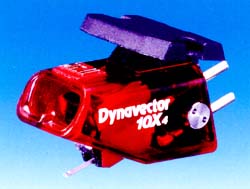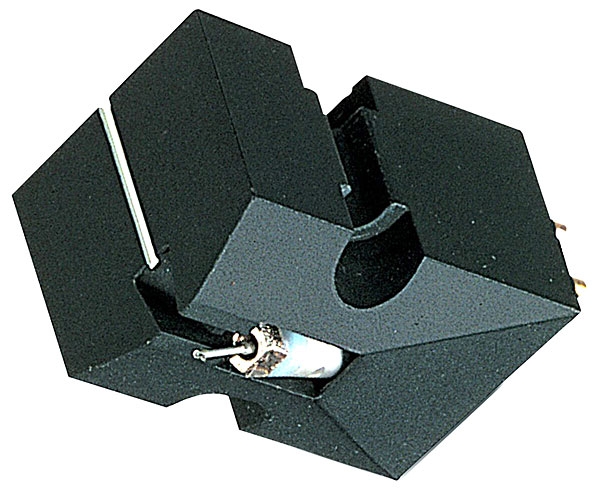The year is 1987, and Compact Disc is on the rise. Turntables and LPs are rapidly disappearing from high streets and shopping malls, with the new digital silver taking their place. The term “death of vinyl” is being bandied about, and hi-fi journals are warming to the concept. You could assume that now isn’t the best moment to introduce a new phono cartridge!
Audio-Technica is a fantastic Japanese firm that excels at what it does best: producing finely developed, high-quality goods in large quantities. Its first product was the AT-1 moving magnet, which was quickly followed by the ‘3 and ‘5, and finally the AT-1001 tonearm. The brand was also one of the first to market with elliptical styli, and it has been fascinated by fancy diamond profiles ever since. In the 1970s, headphones and condenser microphones, as well as the AT-30 moving coil, were introduced. The advent of the OC series in 1987, however, was the company’s largest leap forward in cartridges.
The business had commercialized the ‘Pure Copper by Ohno Continuous Casting’ technology for an AV cable a year earlier, and this was subsequently incorporated into a new version of its traditional cartridge platform, the AT33ML/OCC MC. The OC-9, on the other hand, was a brand-new design and a watershed moment for Hideo Matsushita’s company. The angular 7.8g aluminum-based resin cartridge body was impressively styled at the time, resembling a hi-fi stealth bomber, and came painted in a flawless black and gold finish. A high-quality Japanese-sourced square shank elliptical stylus was held in its gold-plated cantilever, which was attached to PC-OCC coils through a vanadium metal yoke piece. A titanium-oxide/potassium mix was used to make the magnet mold. It had a frequency response of 15-50,000kHz and an output of 0.4mV, which were both excellent for the time.
The original 1987 AT-OC9 was a bit of a head turner, tracking at 1.5g. To be sure, it was supposed to be the end of vinyl’s life, and many of the cartridges of the time sounded mushy and old. The OC9, on the other hand, was bright, tight, rapid, and forensically accurate. It possessed a lot of punch and was particularly good at portraying micro-dynamics like kick drums that were buried in intricate blends. Treble was beautifully prolonged, even, and smooth; many journalists believed it was bright, although it was actually “less dull” than its competitors. The OC9’s drawback was that it was a bit ‘serious’; it didn’t elicit the same emotional response as, say, a Supex from a few years ago. It also lacked the romantic, rich, and warm tonal balance – some even thought it was too close to CD in terms of sound coloration.
Despite this, the AT-OC9 was a huge hit. With significantly better tracking than all cheaper cartridges and many more costly ones, it delivered a taste of the top end for £400. It was elegant, accurate, and instructive, and it went great with the (at the time) warm belt drive British superdecks like the Linn Sondek LP12. The OC9 was a big seller for a long time, but towards the end of the decade, there were better moving coils for the money – the budget Lyras, for example, accomplished things in a more romantic and emotionally believable way while remaining just as detailed.
As a result, the cartridge underwent a number of changes in order to reclaim its place at the top. In the M model, a microline stylus was added, which fully unleashed the OC9’s potential, making it more finely tuned and musically insightful. The AT-OC9ML/ II then received a high-flux samarium cobalt magnet and a gold-plated Boron cantilever, which added even more delicacy and focus — many consider it to be the best of the breed.
The gold-plated Boron cantilever and MicroLine stylus from the previous AT-OC9/III have been replaced with non-gold-plated Boron and a less exotic line-contact diamond, respectively. In defense, Audio-Technica maintains that the new neodymium magnet with permendur yoke is actually stronger than its samarium cobalt predecessor, and that the magnetic field in the coil gap era is stronger. Also, in the UK, this latest edition costs roughly £550, which is nearly half of what it cost when it was first released all those years ago.
The OC9/III now tracks best at 2.0g, rather than the 1.75g of its predecessors, thanks to its redesigned 407m needle. Compliance is rated at 3510 – 6 cm/dyne (1810 – 6 cm/dyne (100 Hz), therefore it can be used in tonearms with medium to high mass. The newest OC9 is still a feisty performer, with plenty of detail and drive, plenty of velocity, and excellent transient resolution; it has a very well defined stereo soundstage with brilliantly positioned pictures that seem to float in mid-air. However, no awards are granted for its average stage depth, while its brother Audio-AT-33PTG Technica’s knocks it to a cocked hat in terms of stage breadth, even if it loses that final tenth of dynamic punch.
This cartridge is a piece of history. It hasn’t gone away, and it has always provided a lot of performance for the price, which has kept customers coming back for the past twenty-seven years. In the grand scheme of things, it’s not unreasonable to think of it as a moving coil cartridge version of Rega’s RB300 tonearm — it’s been around for a long time, isn’t the best in absolute terms, but is consistently fantastic value for money and simply cannot be beat at the price. Fortunately for both items, despite the fact that they were released at a time when vinyl seemed to be on its way out, black plastic has made a comeback, and demand should be as high as ever.







